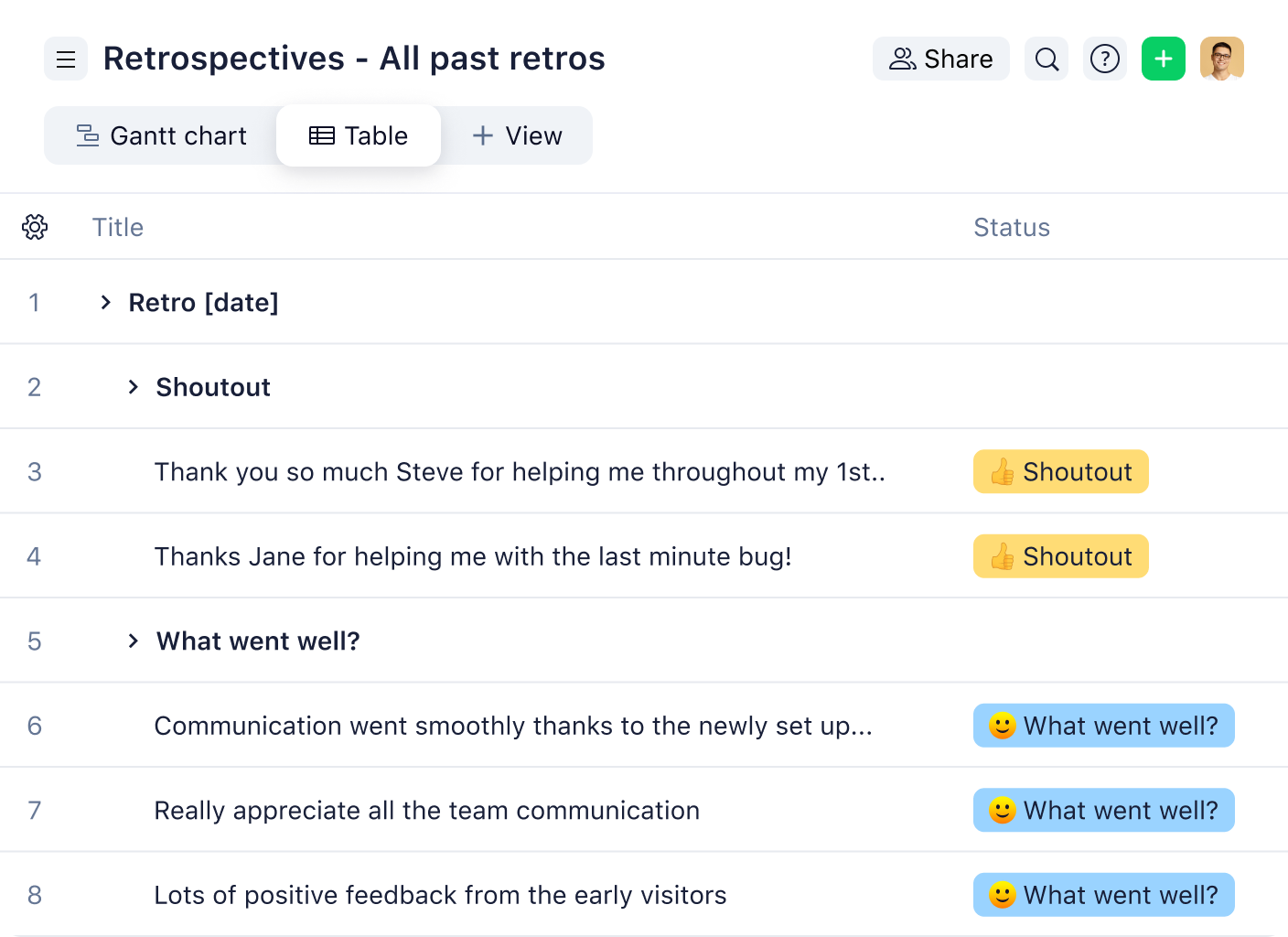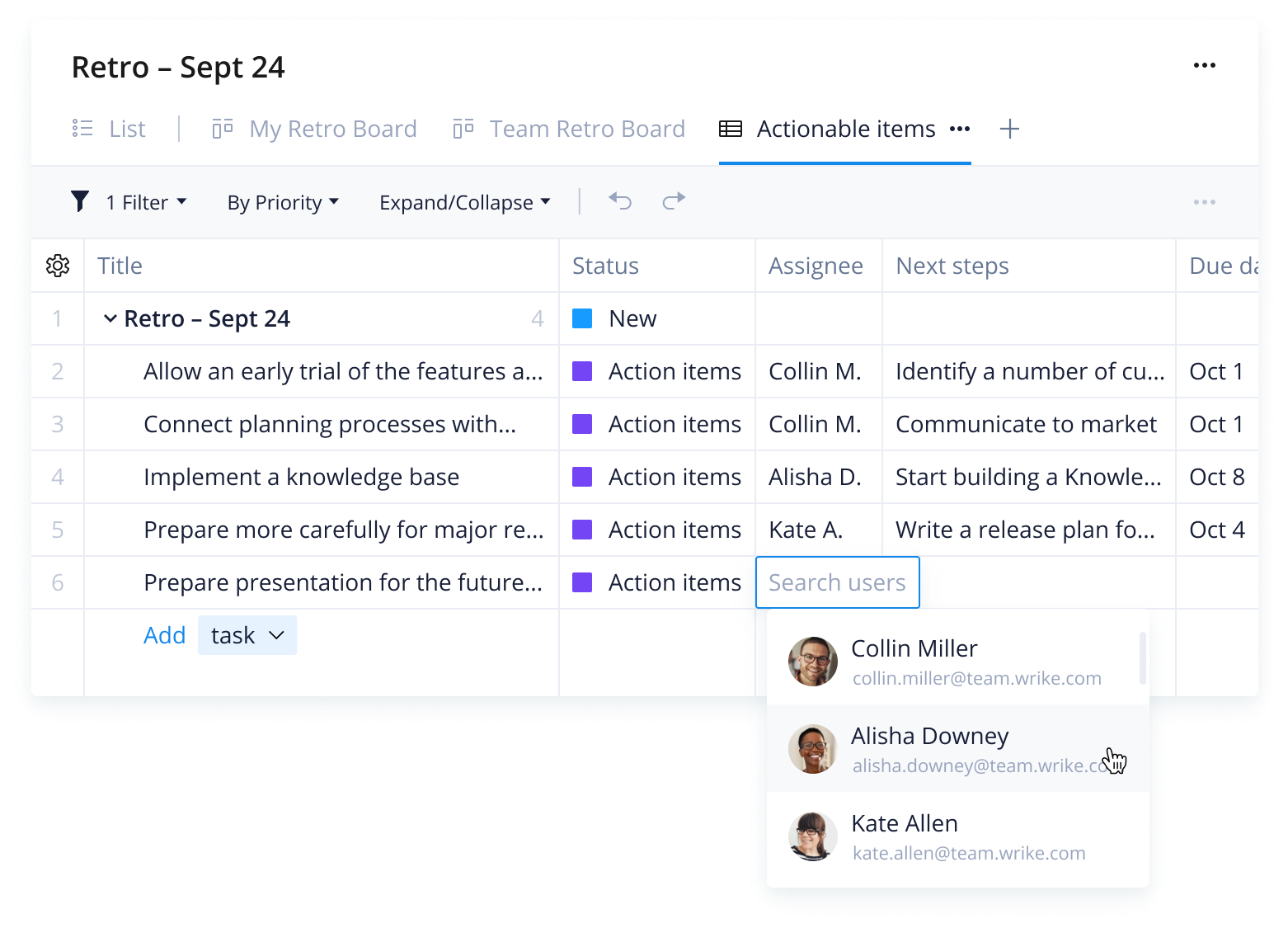- 1. What Is the Scrum Methodology?
- 2. Guide to Scrum Sprints
- 3. Scrum Sprint Planning
- 4. The Complete Guide to Scrum Ceremonies
- 5. The Ultimate Guide to Sprint Retrospectives
- 6. Daily Scrum Meetings
- 7. Scrum of Scrums Meeting
- 8. Introduction to Scrum Team and Roles
- 9. What Is a Scrum Product Owner?
- 10. What Is a Scrum Master?
- 11. Best Scrum Software and Tools for 2025
- 12. A Complete Guide to Scrum Boards
- 13. Scrum Glossary
- 14. FAQs
- 1. What Is the Scrum Methodology?
- 2. Guide to Scrum Sprints
- 3. Scrum Sprint Planning
- 4. The Complete Guide to Scrum Ceremonies
- 5. The Ultimate Guide to Sprint Retrospectives
- 6. Daily Scrum Meetings
- 7. Scrum of Scrums Meeting
- 8. Introduction to Scrum Team and Roles
- 9. What Is a Scrum Product Owner?
- 10. What Is a Scrum Master?
- 11. Best Scrum Software and Tools for 2025
- 12. A Complete Guide to Scrum Boards
- 13. Scrum Glossary
- 14. FAQs
What Is the Goal of Sprint Retrospective Meeting?
Sprint retrospectives are the last step of the Scrum sprint cycle where teams review the Sprint that has been completed to generate ideas for improving the next one.
A sprint retrospective is typically time-boxed at between 60 and 90 minutes but can extend beyond that depending on the length of the sprint itself.


Objectives of a sprint retrospective meeting
The focus of the meeting is not on the product itself but on the processes, tools, and team dynamics that helped deliver the planned increment.
Sprint retrospectives are usually facilitated by the Scrum master who will steer the meeting towards the following outcomes:
- To identify what went wrong - Why wasn’t the team able to deliver planned story points? Was there an issue with the process or a tool, perhaps? Or maybe a team member wasn’t able to complete work due to external factors? It’s important to note that this is not about blaming someone or something but learning how to mitigate risks for the next sprint.
- To identify what went right - Highlight and celebrate achievements beyond what was originally planned for. This helps with morale but is also an opportunity to reinforce Scrum’s key values and principles.
- To identify what can be improved - Identifying key learnings from the previous sprint so that the next sprint can run more effectively. The team should create and commit to a list of action items.
- To nurture a positive culture and environment - This can be achieved by adopting Scrum retrospective games, which are a less formal and more fun way to run the meeting.
This last outcome is critical. Scrum masters need team members to feel valued, trusted, and motivated so that they can tackle the next sprint with enthusiasm and energy. This applies to Scrum masters too.


Tracking goals of sprint retrospective meetings
Scrum masters can take a leaf out of traditional project management by maintaining a list of issues discussed and actioned during sprint retrospective meetings. For example, identifying risks and managing them via a risk register so that they can be referred to at any time during a project.
Tracking sprint retrospectives can also boost the Scrum team’s productivity and improve upcoming sprints. By documenting all concerns, suggestions, and actions, Scrum masters can create a safe space and a valuable reference point for the team.
A sprint retrospective template or document can also help Scrum masters facilitate progress and tackle recurring issues, fostering a culture of continuous improvement. These practices optimize retrospectives and drive overall project success with efficient sprint planning. By prioritizing team members' concerns, Scrum masters cultivate a motivated team ready to embrace challenges.
If you would like to get the most out of your project retrospectives, you can also unlock a free trial now and explore our pre-built sprint retrospective template.

Alex Zhezherau
Alex is Wrike’s Product Director, with over 10 years of expertise in product management and business development. Known for his hands-on approach and strategic vision, he is well versed in various project management methodologies — including Agile, Scrum, and Kanban — and how Wrike’s features complement them. Alex is passionate about entrepreneurship and turning complex challenges into opportunities.

